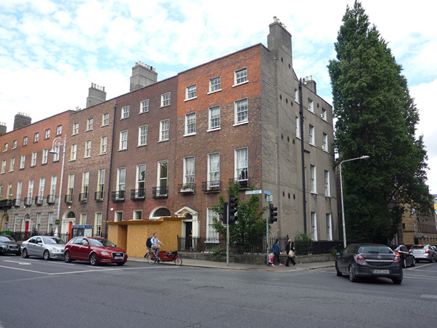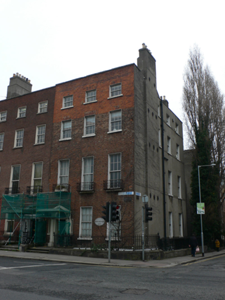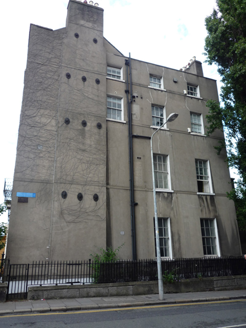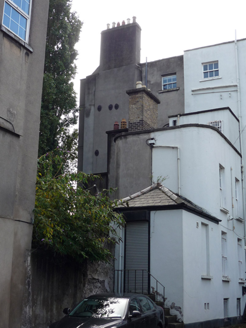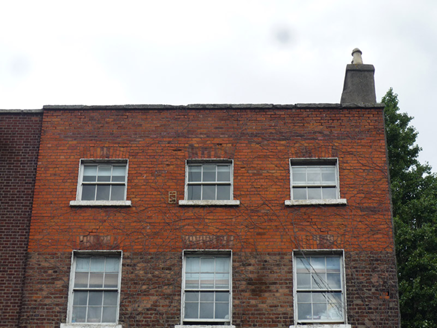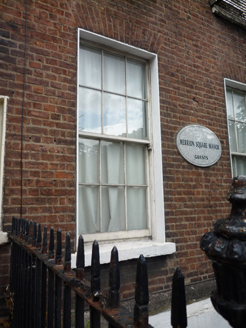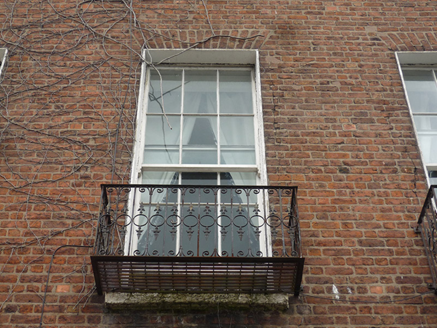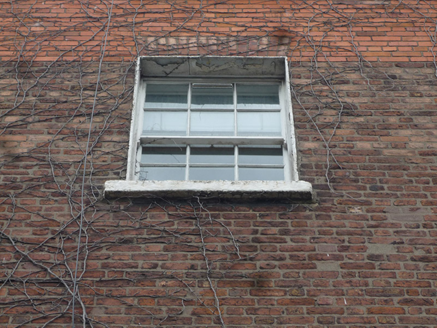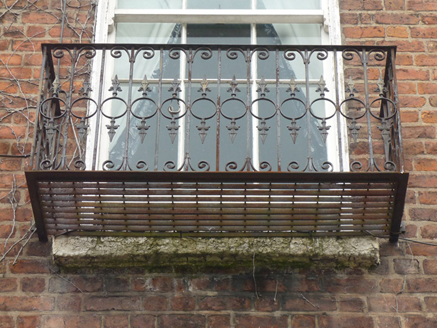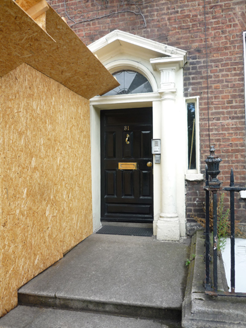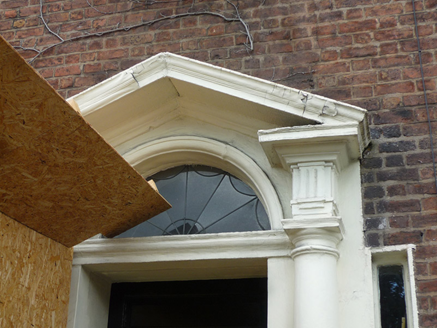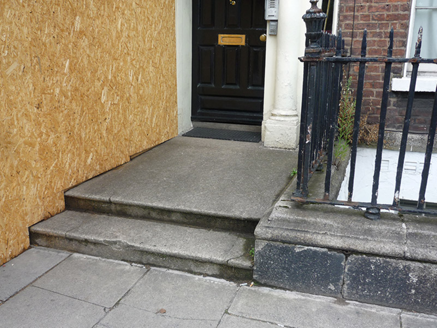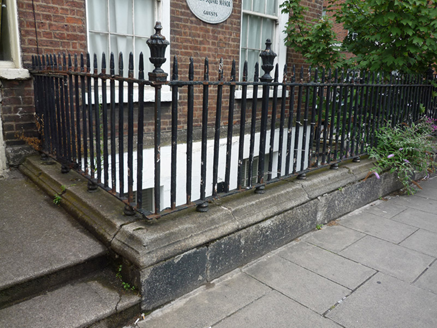Survey Data
Reg No
50100378
Rating
Regional
Categories of Special Interest
Architectural, Artistic
Original Use
House
In Use As
Office
Date
1760 - 1800
Coordinates
316829, 233591
Date Recorded
29/07/2016
Date Updated
--/--/--
Description
Corner-sited three-bay four-storey former house over basement, built c. 1780, having three-bay elevation to east and shared two-stage return to rear. Now in office use. Natural slate roof, pitched to front part, behind reconstructed red brick parapet with masonry copings, rear part has shared hipped roof to west and hipped roof to east, running perpendicular to street, with gabled rendered parapets to rear and to east elevation. Shouldered rendered projecting chimneystacks to north and east gables, shared diminutive chimneystack to west and brown brick to return, with yellow clay pots and some replacement terracotta pots. Concealed gutters, replacement uPVC downpipes to east, and cast-iron pattress plates to east elevation. Flemish bond brown brick walling, refaced above second floor window head, splayed granite plinth over painted ruled-and-lined rendered basement walling, and rendered walling to east and rear. Square-headed window openings, diminishing in height to upper floors, with painted rendered reveals, painted granite sills and timber sliding sash windows with horns, three-over-three pane to top floor and six-over-six pane elsewhere. Decorative wrought-iron balconettes with cast-iron in-fills to first floor of front elevation. Round-headed principal door opening with pedimented painted masonry doorcase having engaged Doric columns supporting open-bed pediment, leaded batwing fanlight and eight-panel raised-and-fielded timber door with weatherboard and brass furniture; doorcase flanked by narrow sidelights with painted masonry sills and plain glazing. Door opens onto concrete platform bridging basement with two steps to street level. Basement enclosed by wrought-iron railings with decorative cast-iron posts on moulded granite plinth; entrance gate no longer in use and original staircase to basement removed. Basement to east enclosed with flat roof at street level. Timber glazed door accesses interior below bridged platform. Casey (2005) notes it is 'remarkably old-fashioned for this date', and has 'lugged door surrounds and several Rococo cornices'. Rear of plot has carparking.
Appraisal
No. 31 Merrion Square, prominently sited at the corner of Holles Street, was leased by George Ensor in 1780 and was built by him as part of a row developed by him and John Ensor. It has largely retained its character and setting which, in conjunction with the adjoining houses, makes a strong contribution to the early character and significance of Merrion Square. It was built as part of the original development of the Georgian square. Laid out as part of the Fitzwilliam Estate, this square is one of the best-preserved Georgian streetscapes in Ireland. The north, east and south sides of the square are lined with terraced houses of eighteenth and nineteenth-century date, while the west side is terminated by the garden front of Leinster House. The houses maintain a relatively uniform building height and design, attributed to standards promoted in Fitzwilliam's leases. Individuality was introduced through the design of doorcases, window ironwork and interior decorative schemes.
